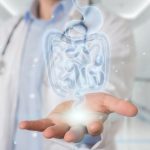Endometriosis affects 10% of women between the ages of 15-44 years old. It is a condition that causes tissue that is similar to the tissue that lines the uterus to grow outside of the uterus. Just like uterine tissue, this tissue will thicken, break down and bleed just like during menstruation.
The trouble is this tissue does not have a way to escape the body. This can cause trouble inside the body. It can cause cysts to develop on the ovaries, cause surrounding tissues to become irritated, fibrous tissue can form and cause organs to stick together. Most of the time endometriosis affects the pelvic organs, like the ovaries, fallopian tubes, and tissues lining the pelvis. Sometimes it can affect other organs such as the bladder and bowels. This condition is usually very painful. The cause of this condition is unknown.
Types Of Endometriosis
There are three types of endometriosis. The most common type is superficial peritoneal lesion. This type causes lesions to form on the peritoneum. The second type is endometrioma, which causes dark, fluid filled cysts to form deep in the ovaries. These cysts can damage healthy tissues. The third type only affects about 1% of women who have endometriosis. It is called deeply infiltrating endometriosis. This type involves other organs such as the bladder and bowels.
Symptoms Of Endometriosis
Symptoms of endometriosis will be different for every single person who has the condition. Symptoms can vary in how severe they are. Some people may have very mild symptoms, while others can have symptoms that are very severe. The severity of your symptoms does not mean your condition is more severe. Someone who has mild endometriosis symptoms may actually have a very severe case.
The main symptom is pelvic pain. Other symptoms you may experience are painful periods, cramps 1-2 weeks around menstruation, heavy bleeding, irregular bleeding, bleeding in between periods, infertility, pain during sex, discomfort bowel movements or urination, lower back pain, bloating, nausea, constipation, or diarrhea.
Risk Factors
You may be at a high risk of having endometriosis if you have a mother, sister, or daughter that has endometriosis. Other things that may raise your risk are abnormal uterus, early menstruation before eleven, or having shorter menstrual periods.
Things that can lower your risk of getting endometriosis are pregnancy, breastfeeding, having your first period after the age of 14, or eating lots of citrus fruits.
Diagnosis
There are few ways your doctor can diagnose endometriosis.
Undergoing a surgical procedure can be one way of diagnosing. Having a laparoscopy is when your doctor will make a small incision in the abdomen, which a camera will be put into to look around the abdominal cavity. During the procedure your doctor will be looking for suspicious tissue. If there is suspicious tissue they can take a biopsy of the tissue during the laparoscopy. The tissue will be sent to the lab to be tested.
Non surgical diagnosing options are an ultrasound. Usually an ultrasound will be done transvaginally to look for tissue, or other abnormalities. An MRI can also help look at organs and tissues as well.
Treatment
Treatment depends on what your symptoms are. One of the main things that people are anxious to help treat is the pain that goes along with endometriosis. Over the counter pain medications can help with the pain.
Hormone therapy is one of the main options for endometriosis. The goal of hormone therapy is to lower the production of estrogen. This can be done with birth control, patches, or vaginal rings. Progestin only contraceptives can also be beneficial.
Another treatment option is Gonadotropin releasing hormone agonists and antagonists, which helps lower the amount of estrogen in the body.
Having a diet that is low in fruits and vegetables and high in red meats can also be beneficial.
Getting regular exercise is important.
Surgery can help remove some of the excess tissue. Sometimes pain will return after surgery.
The last resort of treatments is a hysterectomy.
Takeaway
There is no cure for endometriosis. Symptoms of the condition can range from very mild, to very severe. The cause of this condition is unknown. There are treatment options to help with symptoms and pain. After menopause the symptoms of endometriosis usually lessen.
READ MORE: Ovarian Cyst Rupture – What You Need To Know
Sources:
https://www.mayoclinic.org/diseases-conditions/endometriosis/symptoms-causes/syc-20354656#:~:text=Endometriosis%20is%20a%20condition%20in,including%20the%20bowel%20and%20bladder.
https://www.hopkinsmedicine.org/health/conditions-and-diseases/endometriosis
https://www.webmd.com/women/endometriosis/endometriosis-causes-symptoms-treatment
https://www.healthline.com/health/endometriosis#Takeaway








